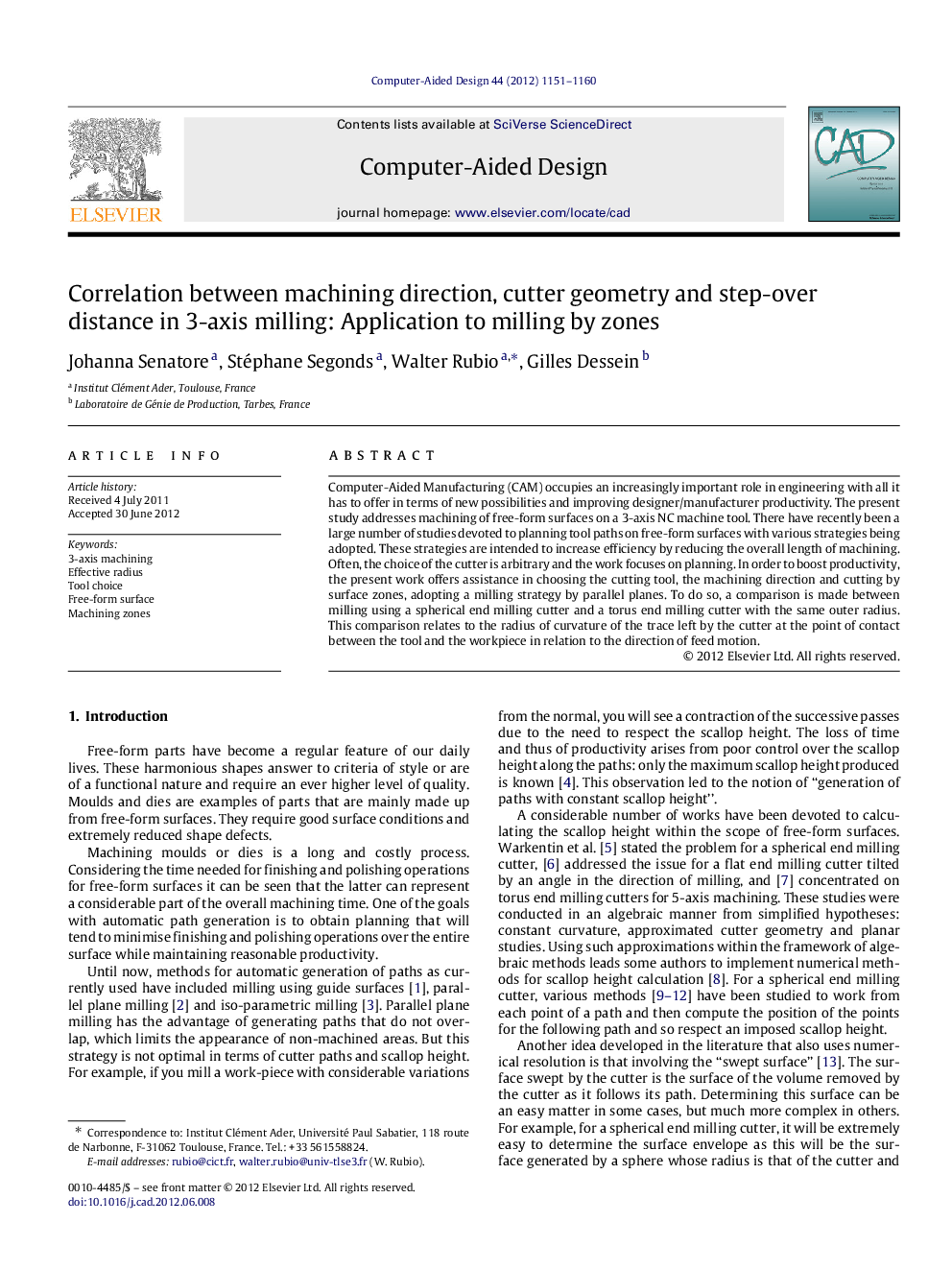| Article ID | Journal | Published Year | Pages | File Type |
|---|---|---|---|---|
| 440229 | Computer-Aided Design | 2012 | 10 Pages |
Computer-Aided Manufacturing (CAM) occupies an increasingly important role in engineering with all it has to offer in terms of new possibilities and improving designer/manufacturer productivity. The present study addresses machining of free-form surfaces on a 3-axis NC machine tool. There have recently been a large number of studies devoted to planning tool paths on free-form surfaces with various strategies being adopted. These strategies are intended to increase efficiency by reducing the overall length of machining. Often, the choice of the cutter is arbitrary and the work focuses on planning. In order to boost productivity, the present work offers assistance in choosing the cutting tool, the machining direction and cutting by surface zones, adopting a milling strategy by parallel planes. To do so, a comparison is made between milling using a spherical end milling cutter and a torus end milling cutter with the same outer radius. This comparison relates to the radius of curvature of the trace left by the cutter at the point of contact between the tool and the workpiece in relation to the direction of feed motion.
► Validation of the choice of tool in 3-axis machining of free-form surfaces. ► Determination of machining zones and associated directions. ► Correlation between effective radius and machining direction.
